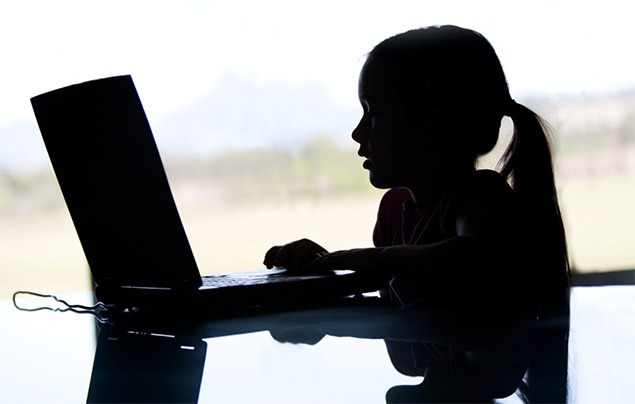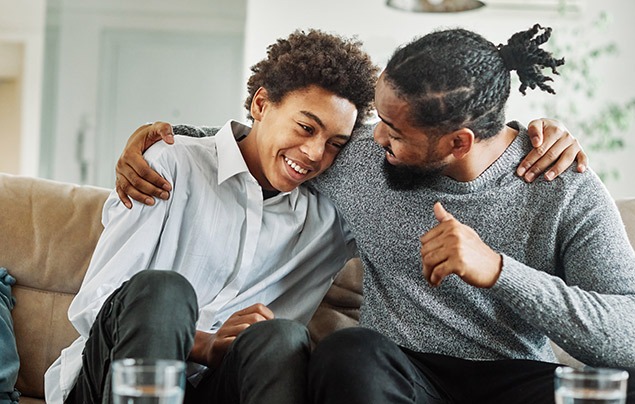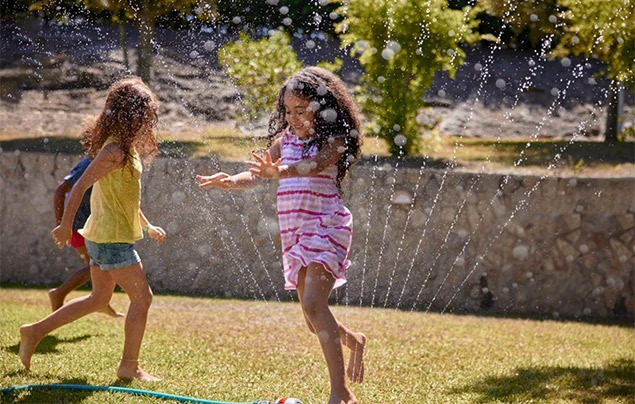Talking to kids about cyberbullying
How to recognise the signs and help your kids.
According to a recent report, 1 in 5 children aged 10-15 in the UK have experienced some form of online bullying.
We spoke to the experts to find out more, including how parents can learn the signs and help with cyberbullying.
What is cyberbullying?
Clinical psychologist Jamie Howard recalls talking to a mother who’d noticed her daughter was staying in her bedroom and crying often. The teen finally revealed that all her friends had formed a separate group chat without her. She had become anxious about why they excluded her and what they were saying behind her back.
“We had her strengthen other friendships and make new friends to rebuild her self-esteem and remind her that she’s very likeable,” says Howard, who specialises in anxiety and mood disorders at the Child Mind Institute. “We got her doing more dance, walking her dog – more activity that naturally brings about self-confidence.”
Howard’s case isn’t unusual. Almost a third of teens have experienced cyberbullying, and the problem seems to be getting worse.
One study by L1ght analysed millions of websites and social platforms in 2020. They found a 70% increase in bullying and abusive language among teens and kids on social media and chat forums, a 40% increase in toxicity on gaming platforms, and a 200% spike in traffic to hate sites.
“We’ve always had problems with bullying,” Howard says. “But it looks different now.”
Victims of cyberbullying are at risk of depression, anxiety, substance abuse, low self-esteem, poor school performance, and an increased risk of suicidal behaviour. In addition, information posted online is difficult to erase and can affect future school and job prospects.
Here’s how to recognise, respond to, prevent and help with cyberbullying.
Recognise cyberbullying warning signs
Cyberbullying can be hard to spot since it’s not always on public display.
Common tactics include posting mean comments; spreading rumours on social media; threatening to harm someone, telling someone to hurt themselves, posting embarrassing photos or videos; doxing (sharing private data like addresses and phone numbers); or posting hate speech related to a person’s race, religion, or sexual orientation.
Family medicine physician Farah Khan says parents should look for changes in their child’s typical behaviour, including worsening grades, changes in sleep or appetite, depression, suicidal thoughts and self-harm.
The effects of cyberbullying can look very similar to depression, says Megan Moreno, the principal investigator of the Social Media and Adolescent Health Research Team at the University of Wisconsin-Madison. A child might disengage from friends and family, not come out of their room, obsessively look at their phone or computer, or become secretive about what they’re doing online.
Moreno says it’s crucial to check in regularly and ask open-ended questions about what they’re doing online and how it makes them feel. Think questions like “How was your Roblox game? Did you see anything on social media that upset you?”
What to do if you think your child is being cyberbullied
If parents are concerned that their child is being bullied, Moreno says the best strategy is to be upfront about what you see. (“It seems like you’re staying up later, and I’ve noticed that you’re tired during the day. Do you want to talk about what’s going on?”)
And if kids aren’t opening up to the parent, try enlisting other adult role models they might feel comfortable with, like another family member, their teacher or a counsellor.
Talk it out
If a child discloses a bullying incident, don’t panic. Parents should get the facts, reassure the child, and work with them on problem-solving.
“A lot of people have been through something like this,” Howard says. “It can be comforting to know you’re not the only one and to get some advice from someone who you think is a little more current.”
Howard also encourages kids to spend as much time as possible with people who are nice to them and doing activities they enjoy.
Take action
Though it might seem tempting, don’t look to taking away their devices as a solution. “They’re already at risk of depression, so taking away their phone is not recommended,” Howard says.
If the child can avoid the person who is bullying – for example, by blocking them on social media – Howard says the parent doesn’t necessarily need to intervene.
But if the child can’t escape the situation and it’s interfering with their lives, it’s time for parents to get involved, especially if it involves school peers.
Howard recommends asking the child if you can talk to their teacher in a way that respects their privacy, or asking if they want to talk to the teacher together.
What if your kid’s the bully?
Howard notes that kids who are bullying others also need help. They tend to be more irritable and may come across as arrogant, less cooperative with household rules, or treat their own parents poorly.
“If you’re having a hard time with behavioural problems with your child, you can say, ‘Do you treat others like this? What are your friendships like? Because this isn’t okay to do to other people.”
Whether a child is being bullied or bullying others, Howard recommends talking to a GP or therapist if they’re experiencing high levels of impairment, emotional distress, or acting out.
How parents can help prevent cyberbullying
Khan says one of the best ways to help kids navigate bullying is to teach safe online behaviour and promote resilience through a healthy lifestyle.
In addition to encouraging a healthy diet, physical exercise and sleep hygiene to keep kids feeling good, Khan says parents should establish rules about responsible online activity. This includes telling them not to share personal information, click unknown links, take explicit photos, talk to strangers, or post mean comments. Parents can also praise prosocial values, like tolerance and respect for others’ differences.
“Ask meaningful questions about their online experiences. Let them know that it’s safe for them to be open with you, and remind them that they won’t lose online privileges for doing so,” she says. Think about open questions like – “I noticed you’re spending a lot of time on TikTok. How is that going? Are kids being nice to each other?”
Howard says parents should also monitor what kids are reading and sharing online, especially if they’ve decided to allow kids under 13 to be on social media.
Be honest and tell them when you’re using parental controls or software monitoring to look at their online activity. “They know that you’re periodically looking, so they learn early on that ‘I have to post as if someone I care about is going to see it.’”
How kids can stand up and help with cyberbullying
Finally, parents should empower their kids to be good upstanders and discuss intervention strategies.
Studies have found that bystanders can play an important role in bullying outcomes. One study found that in 57% of cases where a bystander intervened, the bullying stopped within 10 seconds. Kids who are defended by their peers are also less depressed and anxious.
If a child sees bullying in real-time, they can intervene by questioning the behaviour, changing the subject, diffusing the situation through humour, making positive statements about the target of the bullying, and reaching out to them privately to let them know they’re not alone.
Kids can also help prevent bullying from happening by being kind and inclusive to others. But they should talk to a trusted adult when they’re concerned about someone.
“Empower kids to be upstanders and praise them for positive behaviour,” Howard says. “There can be a lot of pride in doing the right thing and standing up for what you believe in.”















LEAVE A COMMENT
THANK YOU
Your comment will be checked and approved shortly.
WELL DONE,
YOUR COMMENT
HAS BEEN ADDED!
COMMENTS
CUSTOMIZE YOUR AVATAR